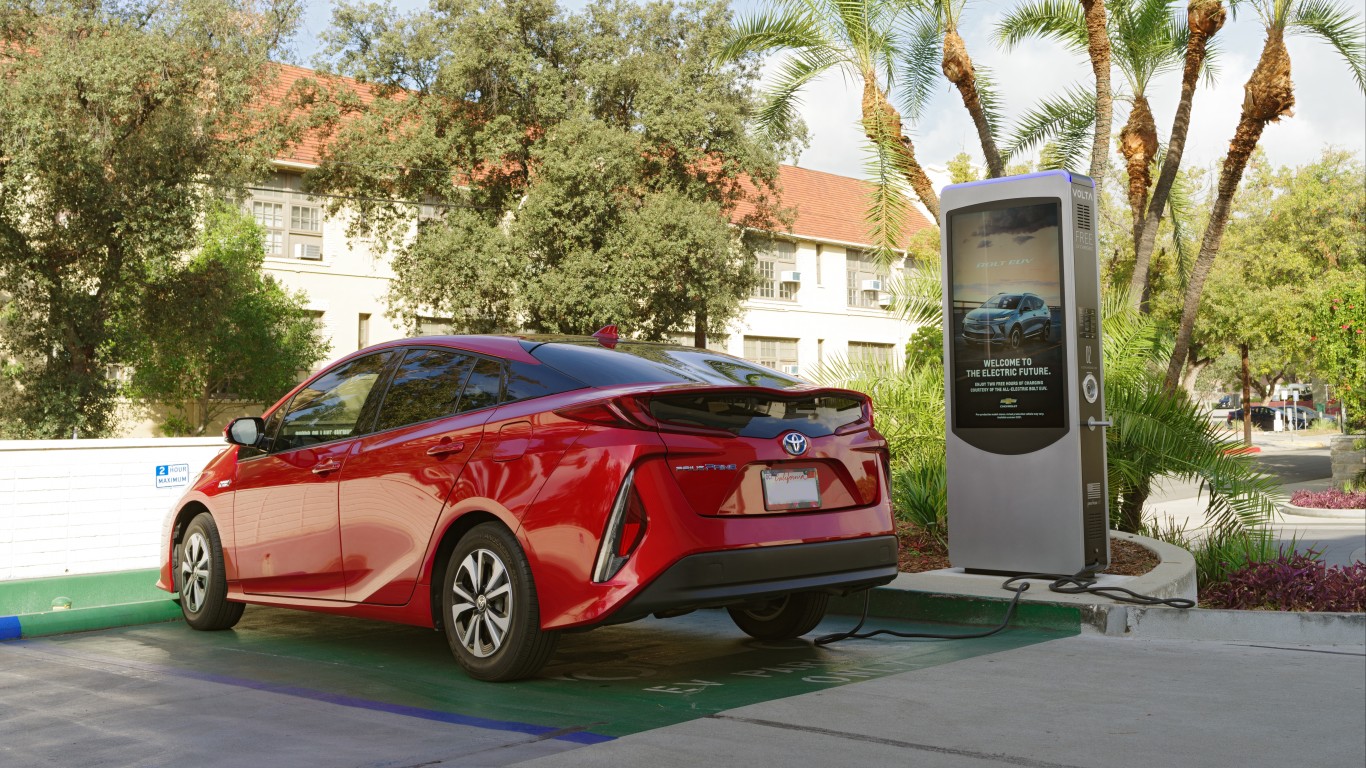
Among other things, the Inflation Reduction Act included tax credits for consumers who purchase electric vehicles. However, the rules for securing a tax credit on an EV purchase are extremely complicated, so consumers should read the fine print before they buy.
Income Caveats For The EV Tax Credit
NPR answered many commonly asked questions about the EV tax credits include in the Inflation Reduction Act. The headline amount of the EV tax credit is $7,500, but most electric vehicles do not qualify for some or even all of that credit.
Of course, this isn’t the first time the federal government has offered tax credits on EV purchases, but the rules have been changed this time around. Consumers must be aware of the many caveats included in the IRA, including income levels, whether the EV is new or used, and even where it’s assembled and where the minerals in its battery come from.
Before you go shopping for an EV, the first thing you should check is your income level. Single taxpayers who earn up to $150,000 a year or couples who earn up to $300,000 are eligible for the EV tax credit. NPR noted that EVs average $66,000, putting them out of reach for lower-income Americans.
Requirements For Electric Vehicles
The IRA also includes some requirements for electric vehicles — particularly the way they are made and how much they cost.
To qualify for the entire EV tax credit, the vehicle must be assembled in North America. According to the U.S. Department of Energy, over two dozen EVs do meet that requirement, although this requirement automatically disqualifies dozens more. While this requirement is already in effect, more go into effect starting on Jan. 1, 2023.
New sedans must cost less than $55,000 to qualify for the EV tax credit, while new trucks, SUVs and vans must sell for less than $80,000 to qualify. On the other hand, used EVs must cost less than $25,000 to qualify for the tax credit, although they won’t have to be assembled in North America.
Battery Limitations To Qualify For The EV Tax Credit
Of course, the battery is one of the most important parts of the vehicle and this is the most complicated part of the requirements for the EV tax credit. The IRA requires that a certain percentage of the minerals used in the battery must come from either North America or a country with a free trade agreement with the U.S.
Additionally, many of the battery components must be manufactured or assembled in North America. The requirements for the battery will be the most difficult ones for EV makers to comply with if they want to shift their operations around in order to make their vehicles qualify for the tax credits.
The Alliance for Automotive Innovation said no vehicle currently on the market will qualify for the entire EV tax credit when the batteries requirements go into effect in January. Thus, the EV market could see a sudden surge in demand this year as consumers rush to secure the entire tax credit on their vehicle.
Partial Tax Credits
Even though no EVs will qualify for the entire tax credit starting in January it will still be possible to qualify for a partial credit. If at least 40% of the minerals used in the battery come from countries with free trade agreements with the U.S., the EV could qualify for a partial cred it $3,750.
The rest of the EV tax credit pertains to the components of the battery. Starting in January half of the components in the battery must be assembled or manufactured in North America. As time goes on, the percentage of minerals in the battery that must come from the U.S. or its trading partners will grow as will the number of components assembled or manufactured in North America.
This article originally appeared on ValueWalk
Take Charge of Your Retirement In Just A Few Minutes (Sponsor)
Retirement planning doesn’t have to feel overwhelming. The key is finding expert guidance—and SmartAsset’s simple quiz makes it easier than ever for you to connect with a vetted financial advisor.
Here’s how it works:
- Answer a Few Simple Questions. Tell us a bit about your goals and preferences—it only takes a few minutes!
- Get Matched with Vetted Advisors Our smart tool matches you with up to three pre-screened, vetted advisors who serve your area and are held to a fiduciary standard to act in your best interests. Click here to begin
- Choose Your Fit Review their profiles, schedule an introductory call (or meet in person), and select the advisor who feel is right for you.
Why wait? Start building the retirement you’ve always dreamed of. Click here to get started today!
Thank you for reading! Have some feedback for us?
Contact the 24/7 Wall St. editorial team.




